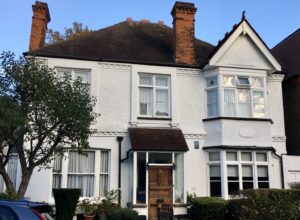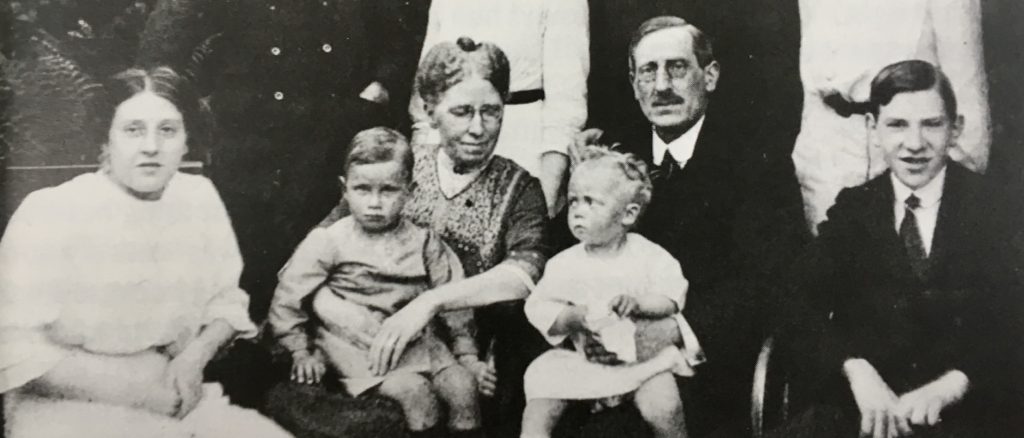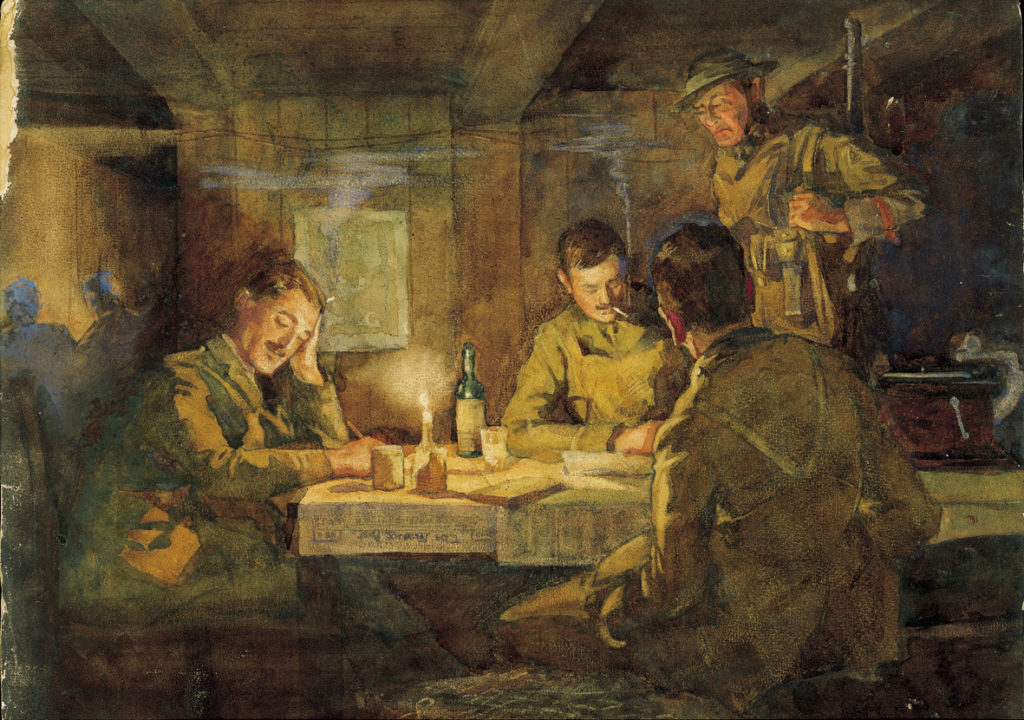Chiswick Timeline of Writers & Books: a quick guide
From 1915 to 1938, James Clark (second from right, above) lived with his family at 44 Rusthall Avenue in Bedford Park W4. His youngest son Cosmo is on the right.
.
James Clark 1858-1943
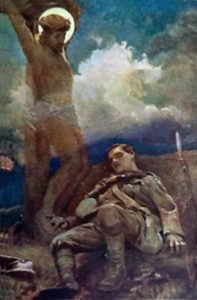
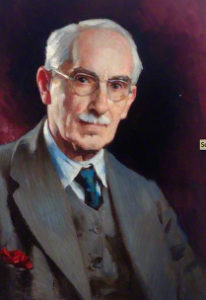 The artist James Clark rose to fame in 1914 with a painting entitled The Great Sacrifice (right). Its idealised representation of a dead soldier at the foot of the cross became a popular print and was used as a war memorial in many public buildings, and in stained-glass memorial windows in churches (see more in his Wikipaedia entry, below). It was described as “the most popular painting of the war”, with its religious imagery providing “consolation to the families of dead soldiers” (George Robb, British Culture and the First World War, Macmillan, 2015 – source: The Victorian Web).
The artist James Clark rose to fame in 1914 with a painting entitled The Great Sacrifice (right). Its idealised representation of a dead soldier at the foot of the cross became a popular print and was used as a war memorial in many public buildings, and in stained-glass memorial windows in churches (see more in his Wikipaedia entry, below). It was described as “the most popular painting of the war”, with its religious imagery providing “consolation to the families of dead soldiers” (George Robb, British Culture and the First World War, Macmillan, 2015 – source: The Victorian Web).
.
In 1915, Queen Mary bought the original oil painting, under its later title Duty, at the War Relief Exhibition at the Royal Academy. Clark produced copies, and other paintings on the theme of war, and he also designed other war memorials. In 1915, he was teaching at Goldsmiths’ College.
.
In 1922, Clark painted The Salutation, a fresco on canvas that is displayed in St Michael & All Angels Bedford Park (below), in a niche in the North Aisle where a window was made redundant by the building of the Parish Hall. It depicts the Visitation of the Virgin Mary to her cousin Elizabeth, the mother of John the Baptist. See more at The Salutation.
.
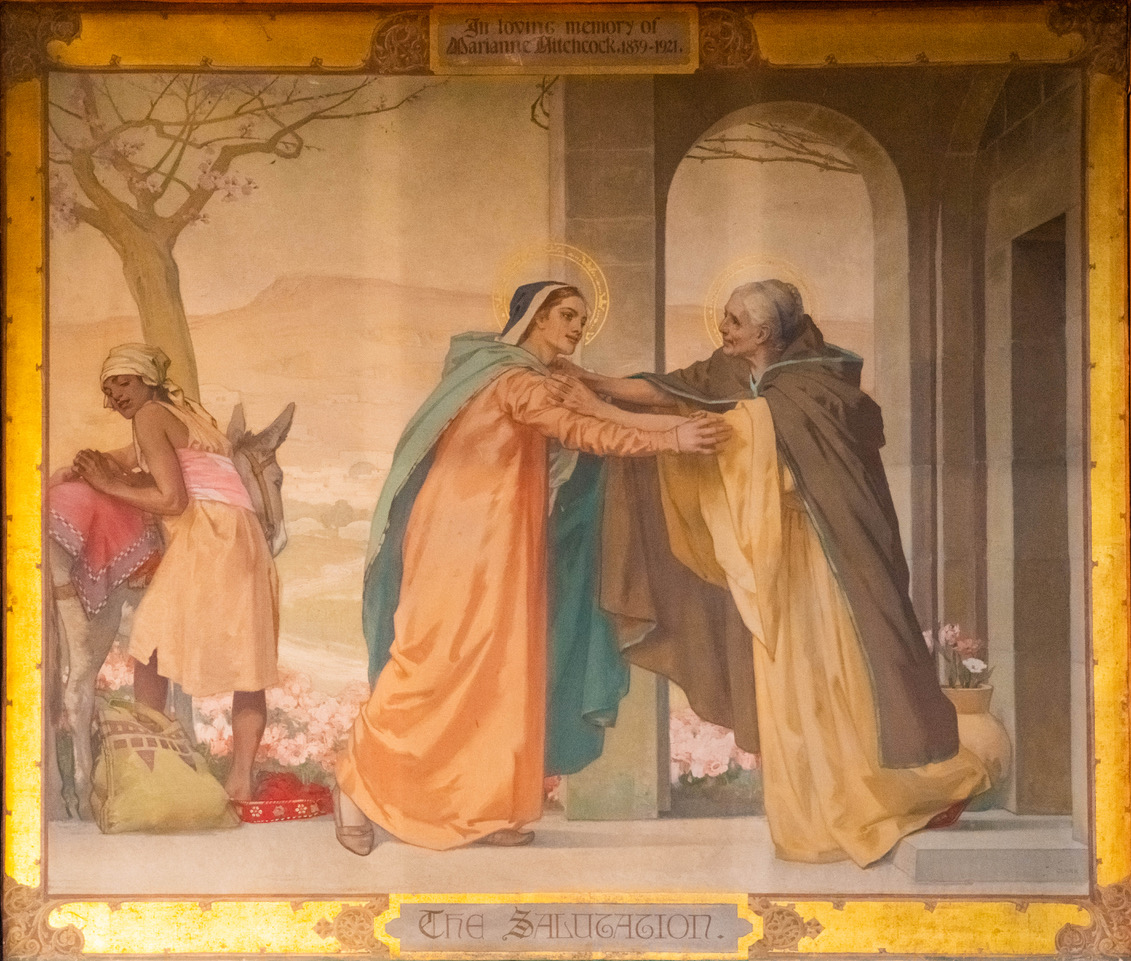
.
Cosmo Clark 1897-1967
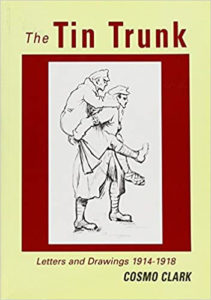 James Clark’s three sons all fought in WW1, including the youngest, Cosmo, who later became a well-known artist like his father. Cosmo volunteered at the age of 17, saw active service with the Artists’ Rifles and was awarded the Military Cross. (His eldest brother Percy also won the MC). He drew sketches of what he saw and was also involved in the trial of a British soldier which ended with the latter’s execution. Captain Clark was the ‘prisoner’s friend’ who represented him at the court martial.
James Clark’s three sons all fought in WW1, including the youngest, Cosmo, who later became a well-known artist like his father. Cosmo volunteered at the age of 17, saw active service with the Artists’ Rifles and was awarded the Military Cross. (His eldest brother Percy also won the MC). He drew sketches of what he saw and was also involved in the trial of a British soldier which ended with the latter’s execution. Captain Clark was the ‘prisoner’s friend’ who represented him at the court martial.
.
Cosmo’s war letters and drawings were published in The Tin Trunk (right), a book compiled and published in 2000 by his daughter, the late Julia Rhys and her husband Stephen. See more details and images on this page: The Tin Trunk: Letters and Drawings 1914-1918
The book became the basis for a play, Cosmo’s War, written and produced by Bernard Adams (see below).
.
In 1938, Cosmo Clark became head of Hackney School of Art. He exhibited at the Royal Academy, the New English Art Club and at the Royal Watercolour Society of which he was an elected member. His work is held in a range of collections including the Government Art Collection and the Imperial War Museum. In 1984, his 1950 watercolour of Cubitts Yacht Basin in Chiswick was displayed at the Patricia Wells Gallery. (See also: Where John Osborne wrote Look Back in Anger).
.
The Great Sacrifice
From Wikipaedia: James Clark (artist):
.
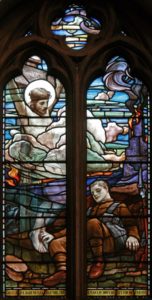 James Clark (1858–1943) was a provincial English painter born in West Hartlepool, in north-east England. He rose to prominence in 1914 when his painting entitled The Great Sacrifice was reproduced as the souvenir print issued by The Graphic illustrated newspaper with its Christmas number. The painting depicted a young soldier lying dead on the battlefield beneath a vision of Christ on the Cross. It had an immediate appeal to many, and prints were snapped up by churches, schools, and mission halls.
James Clark (1858–1943) was a provincial English painter born in West Hartlepool, in north-east England. He rose to prominence in 1914 when his painting entitled The Great Sacrifice was reproduced as the souvenir print issued by The Graphic illustrated newspaper with its Christmas number. The painting depicted a young soldier lying dead on the battlefield beneath a vision of Christ on the Cross. It had an immediate appeal to many, and prints were snapped up by churches, schools, and mission halls.
One reviewer stated that the print had “turned railway bookstalls into wayside shrines.” Framed copies were hung in churches next to Rolls of Honour, and clergymen gave sermons on the theme of the painting. The original oil painting was acquired by Queen Mary, wife of George V, but several other copies were made. Clark designed a number of war memorials and his painting was the basis for several memorial stained glass windows in churches (left).
.
.
The Tin Trunk and Cosmo’s War
.
Painting from The Tin Trunk: Letters and Drawings 1914-1918, by Cosmo Clark.
See: Details, drawings and other images from the book.
The Tin Trunk became the basis for a play, Cosmo’s War, written by Bernard Adams, a former TV producer in BBC Education. To mark the centenary of the Armistice, in November 2018, he produced the play as a dramatised reading in Christ Church, East Sheen, with an audience of 200, in aid of the veterans’ mental health charity, Combat Stress.
In November 2020, Cosmo’s War was due to be performed in St Michael & All Angels Church, Bedford Park, on the eve of Remembrance Sunday – but COVID-19 made that impossible. It was finally performed there as a rehearsed reading on Remembrance Day 2022, attended by members of Cosmo’s family: Cosmo’s granddaughters ‘moved’ by Cosmo’s War.
.
Below: Page 1 of the script – and photograph of the family members portrayed in the play (published in The Tin Trunk.)
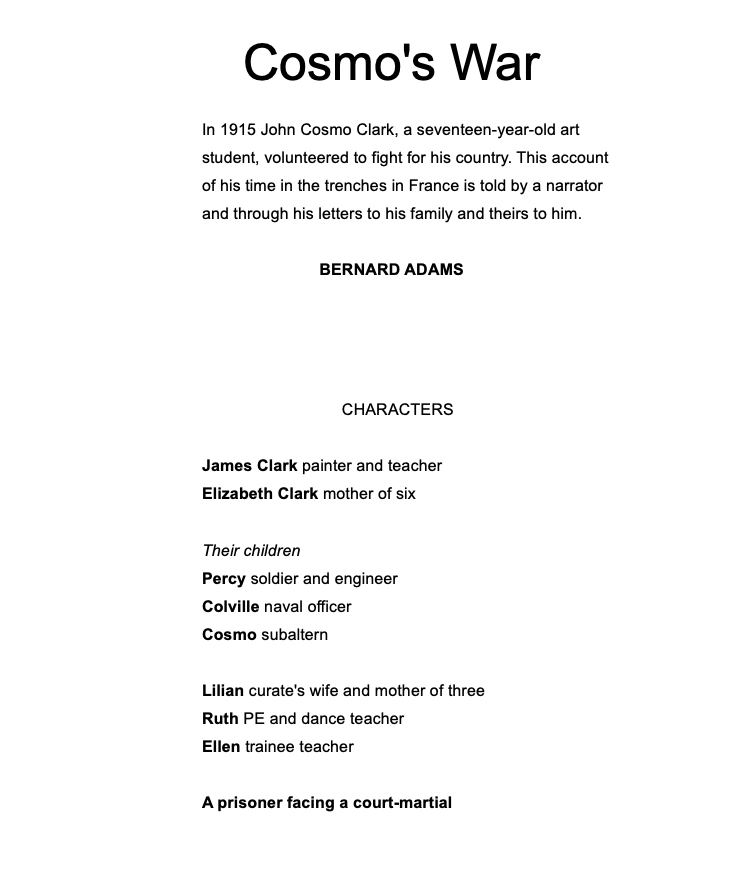
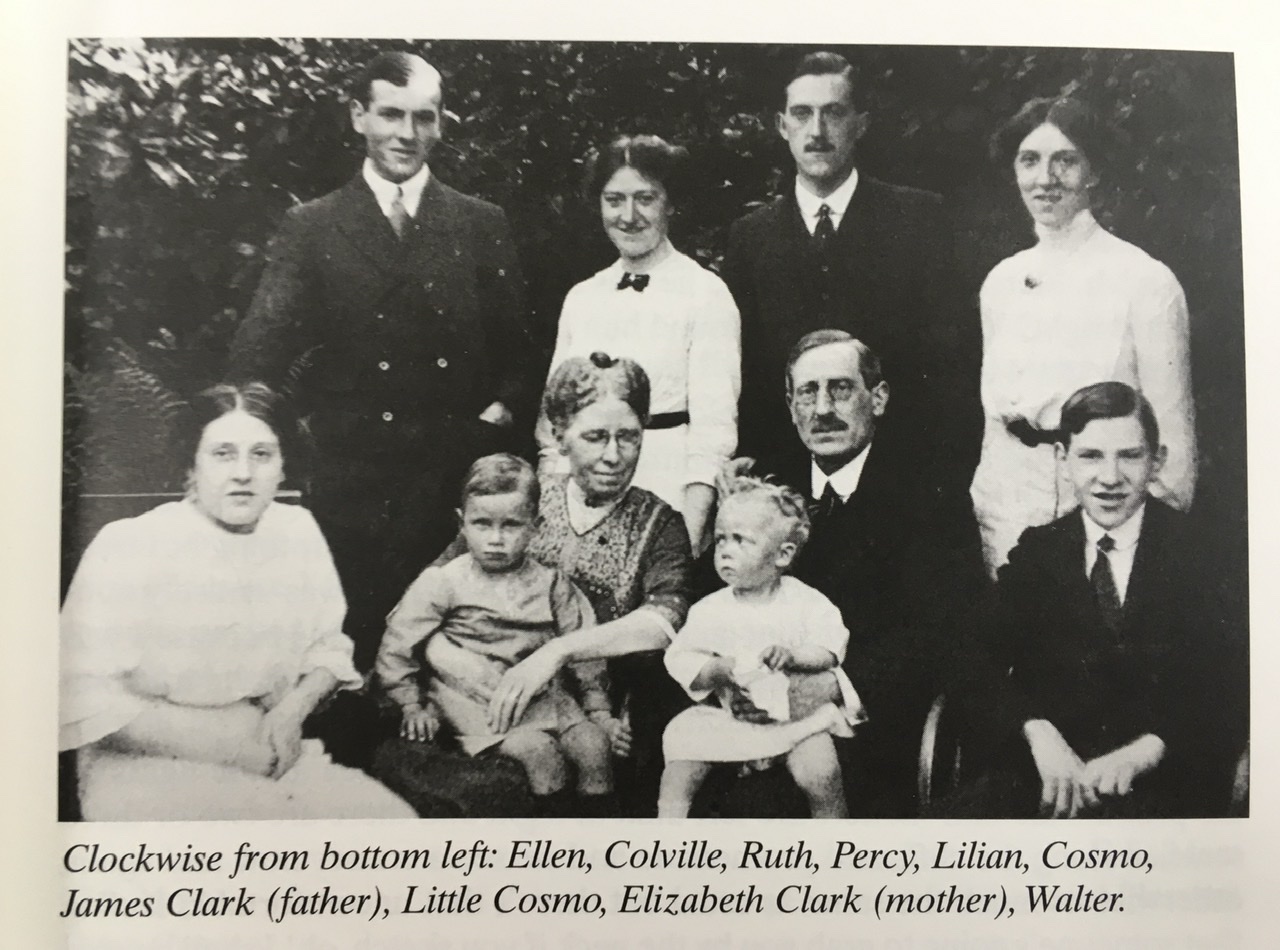
Below: 44 Rusthall Avenue today
